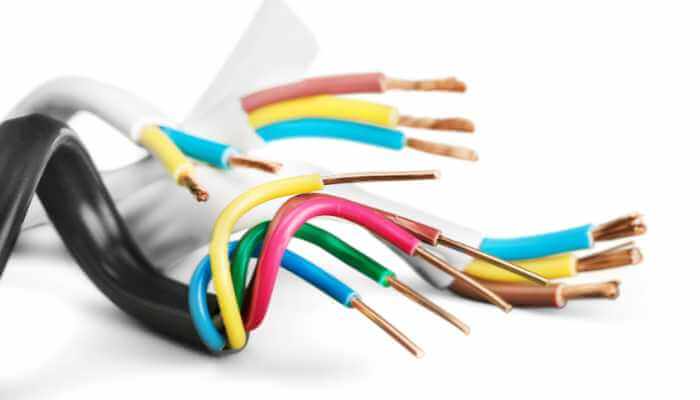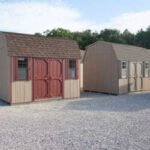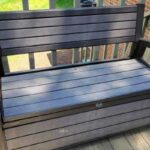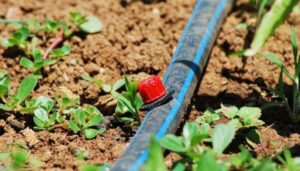There are a lot of factors that come into play when you’re trying to figure out what size cable you need for your garden shed. The gauge of your cable will depend on how much electricity you need to get from your source–your home–to the destination–your shed.
The longer the distance from the source to the shed and the more power needed by your devices, the thicker the cable should be. For short distances and low-power electronics, a 12–14 gauge cable will work. For more amperage, a 10 gauge cable or lower will work.
There are some important things to consider when planning to wire your backyard shed. Other than handling the initial estimates, plans, and physical labor, this may not be a DIY project for you.
How are the different electrical cables different?
We measure cables by several things. For our shed situation, we need to decide which gauge to get, according to the American Wire Gauge system. The most common gauges and the ones you would need for this project are 10, 12, and 14 gauge. The lower the number, the thicker the diameter of the cable and the more amperage and wattage it can carry.
Amperage = strength of an electrical current
Voltage = electrical force needed to drive a current between two points
Amps x Volts = Watts
Wattage = amount of electricity used
The most commonly used gauge is 14 gauge which can deliver 120v so long as your shed is close enough to your house. You’ll see what I mean by this further on.
What do you plan to use the shed for?
Do you want to run hardware tools out of the shed? Do you plan on using it to store things but need a light? Will some additions need electricity? Or will you plug in heavy-duty equipment needing 240v (volt) power sources?
If you have to use a 240v, that means if you want to have a light or any other 120v tool plugged in, you’ll need to have a breaker box installed, too. The 120v outlets and lighting would come from the breaker box, but the 240v plug would be available for any appliance that needs it.
I had an aunt who had a shed off the back of her house where she kept her washer and dryer because the place was so old it didn’t have the space. They ran her light and washer on 120v. However, her dryer needed 240v outlets. A dryer needs that voltage. So the cable gauge was 10 gauge.
Generally, a 14-gauge wire can support 120-volt breakers, which should support all of your shed’s power needs without voltage drops. I’ll have one more exception further on. So keep reading.
How far away from your house is the shed?
The distance makes a difference in voltage drop. Voltage drop is the decrease in electrical potential along the path of a current flowing in an electrical circuit. In other words, the farther you get from your source of electricity, the less power you have running through the cable to the outlet for your devices to use.
The lower the gauge, the thicker the cable and the higher the amperage. Remember? So the closer your shed is, the higher the gauge can be. The farther away your shed, the lower the gauge should be.
You should run a 14-gauge wire to a shed if it is within 20 feet of your home. If your shed is between 20 and 50 feet from your home, you can get away with a good quality 14 gauge. But it’s more likely that to keep from experiencing a voltage drop, you’ll need 12 gauge.
If your shed is over 50 feet from your source, you may need to get 10 gauge with a 240v circuit. For a 240v outlet, 65amps is the minimum amperage on a wire–which should be your connection to a breaker/breaker box. 10 gauge wiring supports 65amps more safely than 12 gauge.
At the last house we owned, there was a shed so far away from our home that a 240v / 10 gauge cable had to be used and a breaker box installed, so there was no voltage drop. We needed all the voltage because of the tools we used at the shed.

Boost’s Tips
Safety First–always turn off your home’s power when you run the wire from it to a shed.
Should you wire your garden shed yourself, or hire someone?
Before I go further, I want to be clear. Deciding which cable gauge and supplies you might need for wiring your garden shed is one thing. However, handling the task yourself is another.
If you have enough knowledge of electricity to keep going with this project, so be it. If not, please hire a licensed and insured professional electrician with experience in wiring an outdoor facility. You can gather supplies for the project and look into the permits and coding, but if you hire an electrician, they should do this.
If you do anything wrong, you can cause a fire hazard. You could shock yourself. You could damage your home’s existing electrical. If you don’t get this work done per code or don’t get it inspected after a licensed electrician has handled it, you risk so much more.
Insurance will not cover a non-permitted electrical upgrade should the wiring cause a fire. And if you resell the house, any work that was not permitted can be problematic for buyers. Doing something small, like replacing an internal outlet, is standard DIY. But running your wiring from your home to your shed isn’t so much. It may also lower the value of your home.
It’s easy to find out whether you have got a permit for anything you have added to your home. So a potential buyer, a savvy real estate agent, or a pesky neighbor can see this as a matter of public record. My advice is to always get a permit before doing anything.
My husband went to trade school back in the day for this, and he will still defer to a licensed, professional electrician for these kinds of projects. The last thing you want to do is put yourself in danger or allow for potential hazards just to save some money.
You also want to avoid going through all that work and effort to under-power or overpower your shed. This would be dangerous and affect your energy usage–and, therefore, what you’ll be paying in the long run. That’s why it’s essential to make the correct decision about hiring an electrician.
If you don’t wire the garden shed yourself, what can you do to save money and time on the project?
You need to have an idea about what kind of cable you need when talking to the electrician you hire. It’s best if you not only plan for the project but also draw out where in the shed you’d like things placed–outlets, lighting, and a breaker box if needed. This will help an electrician understand the job.
When you run a wire from the house to the shed, it’s best if it’s buried. You can cut costs by digging that trench yourself. Find out where the electrician wants the cable buried, and then call 811 or go to https://call811.com/ before digging anywhere. This number sends people from all services out to be sure and mark where any lines may be underground. And before you dig, know that an electrician might have access to machinery that can make quick work of this. Find out before you dig. After all, the trench may have to be anywhere from 1 to 3 ft deep.
I hope this article has at least answered some questions for you. Let us know if you’d like us to add anything else!














